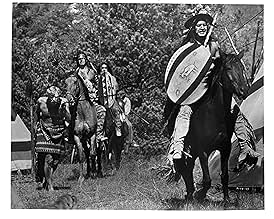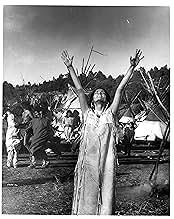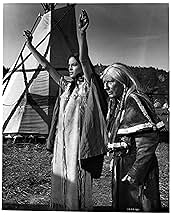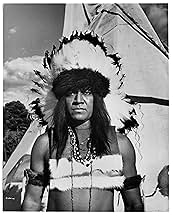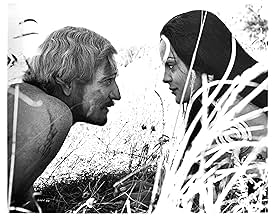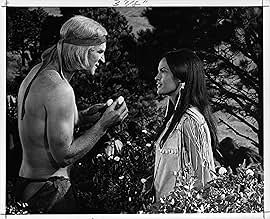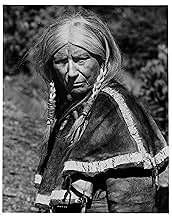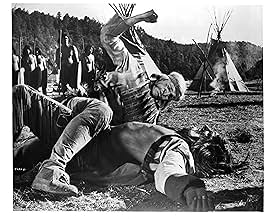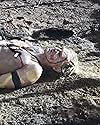IMDb RATING
6.8/10
9.9K
YOUR RATING
In 1825, an English aristocrat is captured by Native Americans. He lives with them and begins to understand their way of life. Eventually, he is accepted as part of the tribe and aspires to ... Read allIn 1825, an English aristocrat is captured by Native Americans. He lives with them and begins to understand their way of life. Eventually, he is accepted as part of the tribe and aspires to become their leader.In 1825, an English aristocrat is captured by Native Americans. He lives with them and begins to understand their way of life. Eventually, he is accepted as part of the tribe and aspires to become their leader.
- Director
- Writers
- Stars
- Awards
- 1 win & 2 nominations total
Judith Anderson
- Buffalo Cow Head
- (as Dame Judith Anderson)
Lina Marín
- Thorn Rose
- (as Lina Marin)
- Director
- Writers
- All cast & crew
- Production, box office & more at IMDbPro
Featured reviews
In 1825, the Sioux, leaded by Yellow Hand (Manu Tupou), capture the English nobleman John Morgan (Richard Harris), while hunting in the United States of America. John is brutally treated like an animal by the Indian, and is given to help Buffalo Cow Head (Judith Anderson), the mother of Yellow Hand, as if he were a horse. Without understanding the language and behavior of the Sioux, he is helped by Batise (Jean Gascon), a white man made prisoner and mutilated by the Indians five years ago. Batise translates and explains the Sioux's culture for John, plotting to escape some day back to the civilization with him. After an undefined long time later, John loses his snobbish behavior and is reasonably integrated to the Sioux. One day, he kills two enemies Shoshones, who were spying and stalking the Sioux, and gains the respect of the Sioux and love of the sister of Yellow Hand, Running Deer (Corinna Tsopei). John marries Running Deer and integrates to their culture, and after a tragic attack of the Shoshones to the Sioux tribe, he becomes their leader. "A Man Called Horse" is a spectacular and powerful classic western of the 70's. The first time I saw this movie, I was a teenager and left the theater completely astonished with such a different story in that time and the violence of the scenes. Two days ago, I bought the VHS and yesterday I saw it again, and it is still a very impressive film, with magnificent performances of the cast, highlighting Richard Harris and Judith Anderson. The production is very careful, being mostly spoken in Sioux, and depicting in a realistic way, the life, the behavior, the common laws and the moral practices of the Sioux. I believe that "A Man Called Horse", with the Sioux, "Soldier Blue", with the Cheyenne and "Little Big Man", all of them from 1970, were among the first movies to show the lives of prisoners of the North American Indians in their tribes. The amazing scene of John Morgan suspended by his chest in an Indian ceremony is unforgettable and very impressive. My vote is ten.
Title (Brazil): "Um Homem Chamado Cavalo" ("Spectacular Classic Western")
Title (Brazil): "Um Homem Chamado Cavalo" ("Spectacular Classic Western")
I have to laugh sometimes when I read otherwise sane comments from amateur reviewers. This film has fairly awkward productions values compared to the present, also many of the actors playing native people are very much NOT native. That aside, this is a BREAKTHROUGH movie for Hollywood circa 1970. This movie is not similiar to Dances With Wolves-it's effectively the other way around. I find it strange so many people make that comment. This movie predates the other by more than THIRTY YEARS!!! Anyway ackward production values aside the presentation of the Lakota is far from the touchy feely view Costner presented,we see the brutal side of their way of doing things also, which is as factual as what we see today just not very PC. This is a great period classic,well worth watching.
I first saw this film in the theatre when it came out in 1970. It was a welcome departure from earlier films about pioneers sitting among their circled wagons shooting whooping Indians like ducks in an arcade.
I saw it last weekend for the first time since, and I think that it holds up well. Whatever the flaws, it is a reasonably good depiction of Dakota Sioux going about their business in the 1820s.
This movie demonstrates that a story can be told with very little dialog and a lot of non-verbal expression. Harris might be the most prominent character but, cumulatively, the cast of small characters weighs in just as heavy.
I saw it last weekend for the first time since, and I think that it holds up well. Whatever the flaws, it is a reasonably good depiction of Dakota Sioux going about their business in the 1820s.
This movie demonstrates that a story can be told with very little dialog and a lot of non-verbal expression. Harris might be the most prominent character but, cumulatively, the cast of small characters weighs in just as heavy.
This movie offered a different perspective of the Sioux, and although controversial, it is worth a view. Director Elliot Silverstein doesn't glamorize the Indians and he doesn't make them victims of white injustice. He just tells it like it is, and I have to admire him for it. Many activists protested what they believed to be inaccuracies; nonetheless, the film is the other side of "Dances With Wolves" (really, it's more like "Run of the Arrow"). For an in-depth interview with Silverstein and the making of "A Man Called Horse," read "Making the White Man's Indian: Native Americns and Hollywood Movies." It's a great behind-the-scenes read of this and other popular Western pictures.
One of the first films to ever deal with the relationship between white men and Native Americans that wasn't slanted towards the white man, A MAN CALLED HORSE was released during the same year as the excellent Arthur Penn film LITTLE BIG MAN and the ultra-violent SOLDIER BLUE, which also dealt with the white man/Indian conflict. Richard Harris gives a great performance as an Englishman who loses his wagon team to, and is captured by, a group of Sioux Indians in the Dakota territory of the mid-1800s. He soon learns their ways of living, which primitive as they might be to us and to him are very traditional. Though the film is rated 'PG', be forewarned that there are scenes of violence and bloodshed (particularly the Sun Vow sequence) that could have gotten this film an 'R' (or a 'PG-13'), so the film is not exactly for kids. Nevertheless, it is worth seeing.
Did you know
- TriviaThe story is based on the experience of Cabeza de Vaca, a Spanish soldier captured by indigenous Americans in 1528.
- GoofsThroughout the film the actress playing Running Deer can be seen with medium long, nicely manicured fingernails.
- Alternate versionsOld German VHS version includes many alternate/more violent takes that are not on the US DVD (whereas the version on the DVD is the same as in the US), especially the ending is almost completely recut. On the other hand the US version includes a few lines which are not in the German version.
- ConnectionsEdited into Commercial Entertainment Product (1992)
Details
- Release date
- Countries of origin
- Languages
- Also known as
- Un hombre llamado Caballo
- Filming locations
- Production companies
- See more company credits at IMDbPro
Box office
- Gross US & Canada
- $1,941,247
- Gross worldwide
- $44,000,000
- Runtime
- 1h 54m(114 min)
- Sound mix
- Aspect ratio
- 2.35 : 1
Contribute to this page
Suggest an edit or add missing content


